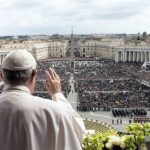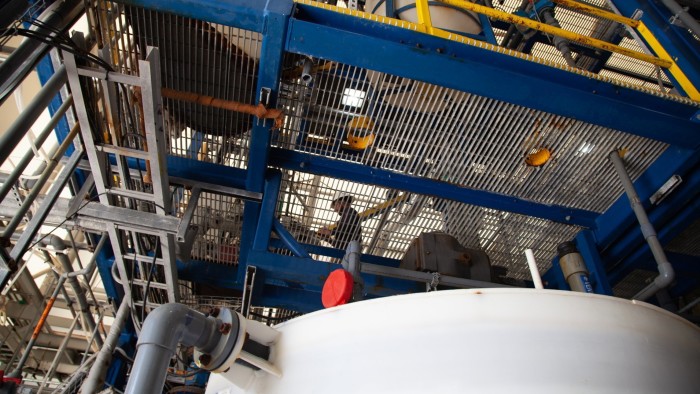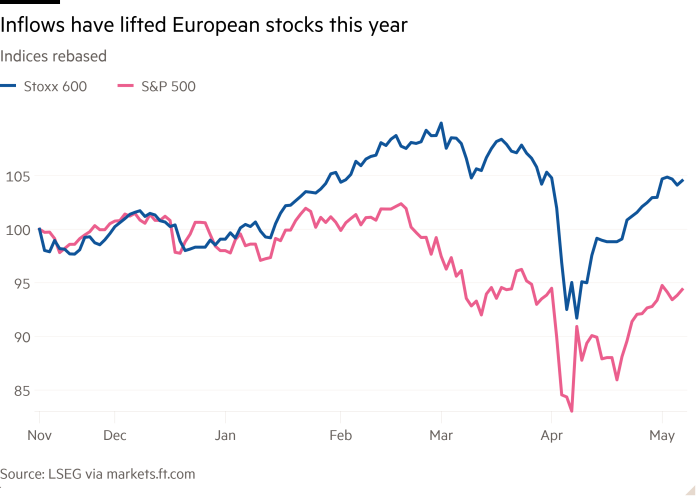India and Pakistan: a conflict in the hands of two religious strongmen

In the days before India’s missile strikes against Pakistan on Wednesday triggered the region’s worst conflict in more than two decades, Narendra Modi projected the confidence befitting a man leading the most populous nation in an increasingly rudderless world.
As India planned the air strikes, Modi had a busy schedule that included a visit by Angola’s president João Lourenço, a phone call with Russian President Vladimir Putin, and — just hours before the attack — a friendly chat with Sir Keir Starmer after India signed a landmark free trade agreement with the UK.
In Pakistan, Asim Munir, the army chief and de facto leader, was also getting ready for war. He installed his confidante and the country’s intelligence chief, Asim Malik, as national security adviser, observed a ballistic missile test, and huddled with his generals. He also hosted Iran’s foreign minister Abbas Araghchi, who was in the region to help defuse rising tensions over a mass shooting of tourists in late April in Pahalgam, Kashmir, that India has blamed on Pakistani-backed extremists.
In the early hours of Wednesday, India fired on what it said was “terrorist infrastructure” deep inside Pakistan. The Pakistani military fired back, claiming to down five Indian jets. The fighting has now escalated to drone attacks and short-range missile strikes, with both countries saying the other has killed civilians.
South Asia’s fate is now largely in the hands of these two devoutly religious strongmen, who both believe they are fighting a just war against a sworn enemy. It is a zero-sum calculation in a region bristling with armaments, including nuclear bombs, and both men’s reputation hangs on emerging with their honour intact.
On the one side is Modi, a Hindu nationalist who analysts say is at his best during a crisis. On the other is Munir, Pakistan’s most religiously observant military chief in decades, who heads an institution increasingly in popular disfavour because of the country’s weak economic record, listless governance, and imprisonment of populist politician Imran Khan.
For now, both are riding a slipstream of nationalist fervour. Indian news channels are cheering on Modi, with India Today presenting him in one online graphic as an orange-caped hero, holding a shield. “This is something which he does very well: an adequate security response that projects to his domestic constituency that Mr Modi is not afraid to rise to an external challenge,” says Nilanjan Mukhopadhyay, the author of a book on the Indian leader. “He is an alpha male with a ’56-inch chest’” — a boast Modi has made to project his strength — “and he lives up to it.”
Pakistanis, too, are for now rallying behind their troops in expectation that they will give India a bloody nose. Protesters this week burned Indian flags and effigies of Modi, chanting “down with India!” after Wednesday’s strikes.
Moeed Yusuf, a former Pakistani national security adviser, says there is now a “consensus” among Pakistan’s security establishment that “India is ideologically out to destroy Pakistan, no matter what we do”.
Modi first built the persona of a tough-on-security strongman during his time governing Gujarat for more than a decade from 2001, when he backed forceful policing, engaged in fiery rhetoric against minority Muslims, and styled himself as the “Emperor of Hindu hearts”. His Hindu nationalism helped propel him to government in New Delhi in 2014.
After serving a decade, the Indian leader was weakened in last year’s parliamentary election, when he won a third term but his Bharatiya Janata party was pushed into minority by a reinvigorated opposition, leaving Modi dependent on smaller coalition partners. This came amid signs that the BJP’s appeal to voters might have peaked, with the party surprisingly losing its seat in Ayodhya, the site of a Modi-supported Hindu temple inaugurated in January 2024.

In the days immediately after the election last year he looked haggard. Some members of the Rashtriya Swayamsevak Sangh, the Hindu nationalist mass movement behind the BJP, voiced rare criticisms. Due to turn 75 this year, many in India began to speculate if Modi was now a politician past his prime.
But in recent months, the prime minister has clawed back significant authority within the BJP after the party won local elections in Maharashtra, Haryana, and in Delhi.
“He is now behaving like he has a full majority, and nobody dares destabilise his government,” says Nitin Gokhale, founder and editor-in-chief of BharatShakti, a defence and strategic affairs platform. “No one is going to utter a word asking why he doesn’t step down at 75.”
Modi notably found his voice last month after Pahalgam, when 25 tourists and a pony ride operator were shot by what India says were Pakistan-backed gunmen, some at point-blank range. According to eyewitnesses, many of the victims were singled out for being Hindu and husbands were shot in front of their wives.
In response to the attack, Modi vowed to “track, punish and kill” the attackers and “pursue them to the end of the earth” in a speech delivered in his booming baritone, alternating between Hindi and English — an indication that this message was meant not just for India but the world.

This week Modi and his government have projected the image of a man firmly in control. India has dubbed the military operation against Pakistan as “Operation Sindoor”, a poignant reference to the vermilion mark married Hindu women traditionally wear at the parting of their hair. New Delhi also deployed one of its suavest diplomats, foreign secretary Vikram Misri, for daily media briefings, also attended by female military spokeswomen, one Hindu and one Muslim.
Posters have in recent days been put up in Mumbai honouring Sindoor and the prime minister with a logo showing a red smear on one of the “O”s and a fatigues-clad Modi sporting sunglasses.
In Pakistan, Munir spent last year shoring up his rule. His lieutenants have installed a pliant government, weakened judges, burrowed into key bureaucratic and economic positions, and, for now, quashed opposition protests, analysts say. He has set himself up for what could be a decade of rule after parliament extended his term from three to five years, which is renewable.
The 57-year-old is the son of an imam and Pakistan’s first army chief to claim to have memorised the Koran by heart. Munir headed the country’s premier spy agency, Inter-Services Intelligence, during 2019’s cross-border skirmishes, and has commanded troops in Pakistan’s mountainous far north and along the Indian border in Punjab.
Evoking Koranic scripture, Munir has promised to crush Islamist and separatist militants plaguing Pakistan’s west. But in India, he is seen as a hardline Islamist and backer of terrorism, with a starkly Manichaean world view. Days before the Pahalgam attack, Munir gave a speech in which he described Hindus and Muslims as “two nations” and called the disputed Kashmir region Pakistan’s “jugular vein”.
“Our traditions are different, our thoughts are different, our ambitions are different,” he said to a crowd of diaspora Pakistanis. “We will not leave our Kashmiri brethren in their heroic struggle.”

Since the April 22 Pahalgam attack, the speech has become fodder for Indians eager to identify a Pakistani hand behind the massacre — and to accuse Islamabad of making the conflict a Hindu-Muslim one, distracting from what India insists is a clear-cut fight against cross-border terrorism. On Thursday, Misri, the foreign secretary, lambasted Munir’s “jugular vein” speech as “the last word in communal rhetoric” — a phrase used to describe sowing dissent between religious groups.
But for Pakistan’s hardline military leadership, analysts say the past two weeks have confirmed their worldview. India has blamed Pakistan for the Pahalgam massacre, rejected an offer for a neutral investigation, and suspended a treaty governing their shared rivers. According to Pakistani officials, India killed over two dozen people, including women and children, in the air attacks. India says Pakistan has “consistently stonewalled” a joint investigation into the 2008 Mumbai terrorist attacks, and would exploit any joint probe of Pahalgam to “cover its tracks” and shield terrorists.
Since Wednesday, Munir has kept a low profile, though he was photographed hugging the sobbing family of a seven-year-old boy Pakistan says was killed by India that day. But his army has been preparing its counterpunch.
“If India will come after us whenever there is a terrorist attack there, then we have no choice but to hit back harder than before and establish deterrence,” says Yusuf, the former national security adviser.
Whereas India and Pakistan’s most recent skirmishes in 2016 and 2019 were carefully calibrated and limited to border areas, including in Kashmir, this conflict has already gone deeper into both countries. On Saturday, both countries targeted air bases deep in each other’s territory with ballistic missiles. Since Thursday, they have launched drones that reached populated cities.
Modi and Munir are now locked in a game of chicken, analysts say. Neither wants a war, but neither wants to blink first. “Tit-for-tat action is moving both sides to take certain measures that make it difficult for the other side to off-ramp,” says Rudra Chaudhuri, director of Carnegie India.

Farzana Shaikh, an associate fellow at Chatham House in London, says Munir, like army chiefs before him, will be able to ride “a wave of nationalist fervour as the country rallies around the military”. Pakistan-claimed shooting down of planes will let him profess “to have vindicated the country’s honour”. In India, Modi has emerged from this week with evident national support.
Analysts say pressure has been mounting on Munir to deliver a blow that would force India to fold, without triggering a prolonged war that Pakistan can ill-afford. India has a stronger economy, more countries courting it for this reason, and a leadership with firmer public support. Pakistan’s economy is fragile, and its forces are bogged down fighting two deadly insurgencies near the border with Afghanistan.
But despite the risks, “when it comes to India, it is existential. We will climb the escalation ladder with them, one notch up,” says Majid Ehsan, a retired general who heads the Islamabad Policy Research Institute, an official think-tank.
As the rest of the world watches on anxiously, US President Donald Trump offered to mediate the spiralling conflict, saying, “If I can do anything to help, I will be there.” Marco Rubio, secretary of state and national security adviser, has phoned Munir and other key officials on both sides. But Trump’s isolationist instincts — as well as India’s economic and geopolitical heft — mean the one country with the leverage to defuse the crisis may be unwilling to use it.
“Right now we are on the escalator,” says Chaudhuri. “Someone needs to either claim a draw or a victory on both sides — but it’s almost impossible to say what that is.”







